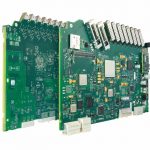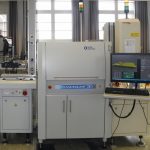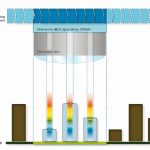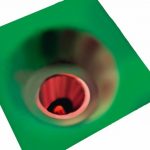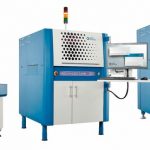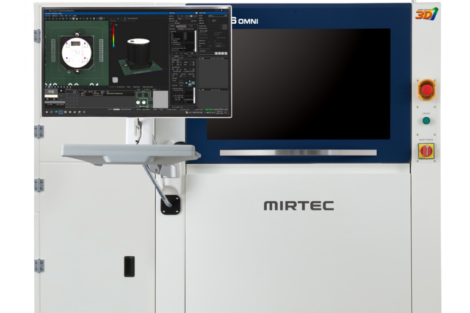Coriant is a provider of innovative and dynamic data transfer systems in the area of packet optical and for connections of data centres to one another. With its solutions, products and services, the company supports telecommunications suppliers worldwide to reduce the complexity of their networks, form a basis for the new generation of services in the area of mobile, video and Cloud and therefore to draw the best possible value from existing network infrastructure. They are supported by more than 1,800 patents and over 35 years of experience in the construction of high-performance optical telecommunication networks.
They have more than 500 customers in more than 100 countries – operators of mobile phone networks, landline networks, Cloud and data center networks or providers of Web 2.0 or major companies – and counts nine out of the top ten network operators in the world amongst its customers. In its delivery operations center in Berlin, the company primarily manufactures systems for long-distance transmission.
The challenge: depth measurements in holes
Components are installed in control cabinets, also known as racks, and are parts of a transmission path. Increasingly, press-in connectors are used in the latest generation of components, which have very short pins for fulfilling the high-frequency technical requirements. In complex multilayer boards with more than 20 layers, the pins are shorter than the circuit board thickness and cannot be checked for correct fitting from the opposite side by conventional means. What makes this even more complicated is that the diameter of the holes for these connectors is far less than a millimeter. Alongside simply the existence of the pins in the hole, the realized press-in depth plays a role in the quality of the signal transmission. Should the pin, upon being pressed in, have become bent in such a way that a short circuit is created, this can lead to electrical damages to further components.
The search for an inspection team that can test the press-in connectors described safely and with sufficient speed proved difficult. When talking to Göpel electronic, there was finally the possibility of equipping a system of the already established „AdvancedLine“ series with an innovative 3D measurement technology, so that it meets the given criteria.
3D measurements based on TMSA technology
Telecentric Multi Spot Array, or TMSA in short, is a new technology provided by the company, which makes it possible to carry out 3D measurements even into deep holes with very small diameters.
In this process, a light source is coupled into a telecentric measuring lens developed especially for this purpose. As a result, there is no angle between the light source and the sensors – in contrast to the triangulation technologies – which means that the lighting and signal beam path are identical. The advantage of this arrangement is that, on the one hand, no shadowing on high components and, on the other, there can be safe measurement even in deep component chasms.
The lens now differentiates the individual light wavelengths, so that only a small wavelength range is focused, depending on the distance between the measuring lens and the surface to be measured. The reflected light, or measuring signal, is then converted to a height value by evaluating the respective intensity. Since this lens projects individual measurement points onto the PCB, the spot array must be moved for a wide-area recording of measurement values. Depending on the increment, this makes it possible to implement different lateral resolutions during scanning, so that they are freely configurable based on the requirements of the measuring task.
The TMSA technology is available as the 3DEyeZ sensor system and can be integrated into the stand-alone and inline AOI systems by the company. Alongside the conventional visual inspection of electronic components, the measurement of the press-in depth of press fits is a decisive unique selling point of the systems. Here the circuit board hole can be directly „measured into“ and the position of the pin head within the circuit board material can be determined in all three dimensions. Even when it comes to holes with a diameter of up to 200 μm, measurement of the precise height in the hole is possible with a precision of up to 5 μm.
Efficient use of the system in the production process
The decisive criterion for use is the proof of process capability, i.e. the precision of depth measurements and the spreading of measurement values in repeated measurements. The measurement precision was checked with a 3D measurement standard; repeated measurements were undertaken using a standard component. Both the theoretical and practical suitability, including under the influence of environmental conditions, were able to be proven by this.
The system is installed directly after the „press in“ process step. This allows every circuit board to be checked by the same operator immediately after complete of the process. Faults can be corrected before the component is completed, fitted and tested. The entire test process is also quicker than the press-in process in complex test tasks with many connectors to be tested, so that there is no delay in the operational process due to the additional test step. The test results are saved in a SQL database and available for process quality analyses.
This great product diversity at Coriant Berlin means that new test programs have to be continuously created for prototypes, pilots, and series products. An inspection system therefore has to make the simple and quick production of programs possible. Thanks to the presented system, programs can simply be produced from the existing circuit board data. Once produced connector models can be used again for all subsequent programs.
The previous experiences in regular use show that the use of the existing system could minimize fault frequency. Incorrectly pressed in connectors are safely detected and can be repaired. The inclusion of test results in the existing data collection environment is planned for the future so that a complete picture of the production history of every component can be attained.
A further, major benefit lies in the significant reduction of the downstream test engineering activities. These can now be reduced to a minimum thanks to the extremely high test precision of the AOI. Equally, costly reworking due to faulty connectors is now a thing of the past. This not only allows resources to be more specifically used, but also customers to be provided with an even better production quality.
In addition to the inspection of press-in connectors and contacts, Göpel electronic also offers the 3DViewZ measurement module for the 3D measurement of components and solder joints in the SMD area. It combines 3D measurement technology based on triangulation with 2D image recording processes with an identical field of view and therefore also allows the use of production lines with the shortest of cycle times.
The implementation of the 3D fitting inspection proves how quickly and flexibly Coriant has taken on an existing challenge and developed a practical, „Made in Germany“ solution together with Göpel electronic.
SMT Hybrid Packaging, Booth 4A-222
www.goepel.com; www.coriant.com
Zusammenfassung Résumé Резюме
Seit einiger Zeit wird eine zunehmende Anzahl von Steckverbindern nicht mehr gelötet. Die Herstellung des elektrischen Kontaktes erfolgt dabei mit einer lasttragenden Verbindung der Anschlüsse mittels Durchkontaktierung in der Leiterplatte. Um dabei eine sichere Funktionalität zu gewährleisten, gibt es neue Anforderungen an die Qualitätsprüfung, die wiederum neue Verfahren für die Messtechnik erfordern. Das folgende Beispiel zeigt, wie diese neue Aufgabe durch den Einsatz innovativer Technologien gelöst wird.
Depuis un certain temps, un nombre croissant de connecteurs ne sont plus soudés. Le contact électrique est réalisé avec une connexion porteuse des connexions au moyen d‘une connexion intégrée dans la carte de circuit imprimé. Afin d‘assurer une fonctionnalité fiable, il existe de nouvelles exigences pour les tests de qualité, qui nécessitent à leur tour de nouvelles procédures pour la métrologie. L‘exemple suivant montre comment cette nouvelle tâche peut être résolue en utilisant des technologies innovantes.
С некоторого времени производители все чаще отказываются от пайки штекерных соединителей. При этом создание электрического контакта осуществляется за счет создания несущего сквозного соединения внутри печатной платы. Для обеспечения надежной работы изделий были выработаны новые требования в отношении контроля качества, реализация которых не возможна без применения новых методов измерения. В статье рассказывается, каким образом решается подобная задача с применением инновационных технологий.


